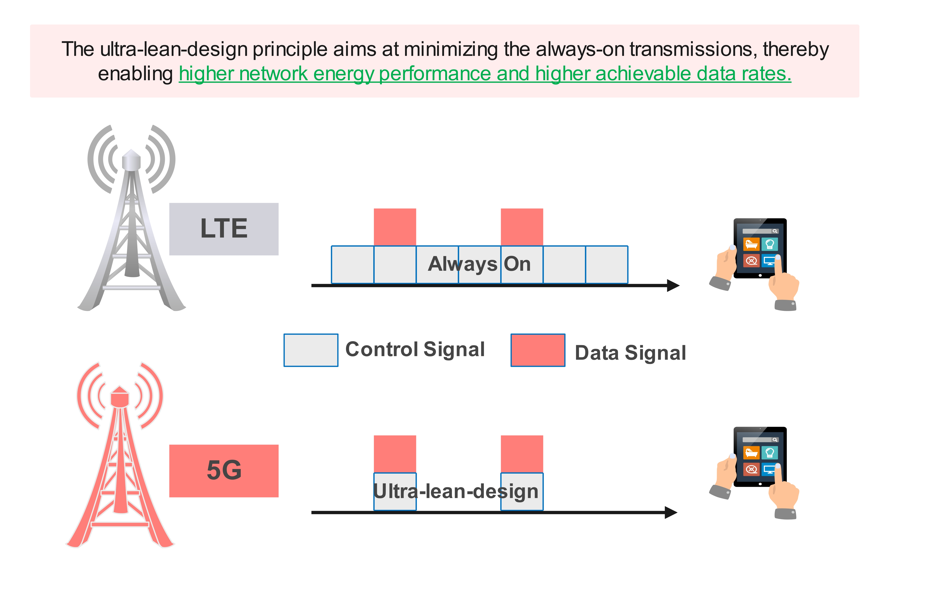𝗪𝗵𝗮𝘁 𝗶𝘀 𝗨𝗹𝘁𝗿𝗮-𝗟𝗲𝗮𝗻-𝗗𝗲𝘀𝗶𝗴𝗻 in 5G?

Ultra-lean is 𝗼𝗻𝗲 𝗼𝗳 𝘁𝗵𝗲 𝘁𝗵𝗿𝗲𝗲 𝗱𝗲𝘀𝗶𝗴𝗻 𝗽𝗿𝗶𝗻𝗰𝗶𝗽𝗹𝗲𝘀 𝗼𝗳 𝟱𝗚 𝗡𝗲𝘄 𝗥𝗮𝗱𝗶𝗼, which significantly improves network energy efficiency and reduces interference in high traffic load conditions.
𝗕𝘂𝘁 𝗵𝗼𝘄 𝗱𝗼𝗲𝘀 𝗶𝘁 𝗮𝗰𝗵𝗶𝗲𝘃𝗲 𝘁𝗵𝗲𝘀𝗲 𝗼𝗯𝗷𝗲𝗰𝘁𝗶𝘃𝗲𝘀?
- The so called always-on signals design in the 4G network, where the reference signal is being transmitted a𝘁 𝗿𝗲𝗴𝘂𝗹𝗮𝗿 𝗶𝗻𝘁𝗲𝗿𝘃𝗮𝗹𝘀 𝗲𝘃𝗲𝗻 𝘄𝗵𝗲𝗻 𝘁𝗵𝗲𝗿𝗲 𝗶𝘀 𝗻𝗼 𝗱𝗮𝘁𝗮 𝘁𝗿𝗮𝗻𝘀𝗺𝗶𝘀𝘀𝗶𝗼𝗻 (Reference signals, synchronization signals, and system broadcast information are examples of such transmissions), which have two negative impacts:
- They impose an upper limit on the achievable network energy performance.
- They cause interference to other cells, thereby reducing the achievable data rates.
- The ultra-lean design principle 𝗮𝗶𝗺𝘀 𝗮𝘁 𝗺𝗶𝗻𝗶𝗺𝗶𝘇𝗶𝗻𝗴 𝘁𝗵𝗲 𝗮𝗹𝘄𝗮𝘆𝘀-𝗼𝗻 transmissions where the network should transmit signals only when necessary, thereby enabling higher network energy performance, which is vital for a sustainable society.
- It also reduces network operational expenses and enables higher achievable data rates.
- NR has four main reference signals: demodulation reference signals, phase tracking reference signals, sounding reference signals, and channel state information reference signals.
- 𝗧𝗵𝗲𝘀𝗲 𝘀𝗶𝗴𝗻𝗮𝗹𝘀 𝗮𝗿𝗲 𝗼𝗻𝗹𝘆 𝘁𝗿𝗮𝗻𝘀𝗺𝗶𝘁𝘁𝗲𝗱 𝘄𝗵𝗲𝗻 𝗻𝗲𝗰𝗲𝘀𝘀𝗮𝗿𝘆, making NR design ultra-lean.





